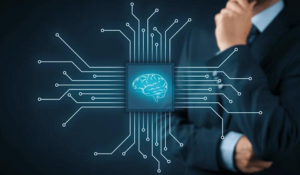The BSI: The protective shield of the digital world in Germany
The digital world offers us enormous opportunities: increased efficiency, networking and innovations that make our lives easier. But as...


by Alfred Ortiz, CEO of CyberSoftwareDistributors LLC and Doctoral Candidate in Information Systems at IE University in Madrid, Spain.
One of my favorite movies is I, Robot where “Sonny” a more advanced prototype of a robot from the fictional company USR (US Robotics) along with Will Smith and Bridget Monynahan’s characters share the spotlight to save humanity against an army of robots made by V.I.K.I. (Virtual Interactive Kinetic Intelligence) who’s ultimate logic was to save humanity from itself.
A big buzz word these days in the IT world is Artificial Intelligence, yet we do not have automated robots that can have a conversation with us nor command them to take care of daily tasks as in the movies. Ours is a world of machine learning, technology based on software that is processing data, recording and tracking, and looking for anomalies in its most simple example. Yet, we are in the very initial stages of this next generation of technology.
The current technology explosion is generating data exponentially from IoT devices on a daily basis. All facets of business are affected, data to be analyzed and decisions to be made. Data in and of itself is much too scattered to be digested by any one person and hiring an army of people to analyze the data is much too cumbersome and expensive.
CNBC’s Evelyn Cheng September 2018 article suggests that 70% of all businesses will have AI in their environments by 2030. Protecting our, ever increasing, IT assets will be no different, particularly with limited budgets and staff in cyber security. Machine learning will need to do more, covering more of what IT staffs used to do when confronted by cyber-attacks. Machine learning will need to recognize and act, as it will be the most efficient way of protecting a company’s environment.
As companies become more automated in their processes adding IoT endpoints, rather than humans, to provide their product or service, such as robot arms on a factory floor or 3D printing machines in various parts of the planet. How will they be protected? It is inevitable that there will be a race to provide a smarter software product that can automate black/white listing of devices or recognize threats in an environment automatically.
Is AI here? To a certain degree, yes. Yet as the ever increasing amount of endpoint devices finds its way to enterprises, cyber security software will need to do more, and eventually automate a process that businesses can live with and where software manufacturers will be forced into providing as the market demands. If necessity is the mother of invention, machine learning will be the father to artificial intelligence.
It will be vital to protect endpoints in various forms with smart software with built-in machine learning to take the next step in automating the process of securing IT networks in enterprises. This day is here and the technology is growing rapidly, as technology will continue to progress. Yet, we are still waiting for the day to have a conversation with “Sonny” and his colleagues to fetch us a cup of coffee.

The digital world offers us enormous opportunities: increased efficiency, networking and innovations that make our lives easier. But as...

In our increasingly digital landscape, the importance of understanding and defending against computer worms cannot be overstated. Whether you're a...
.png)
June 2024 marked the 11th anniversary of the Harvard Faculty Club's Maximize Your Board's Potential program. It was the second time I've had the...